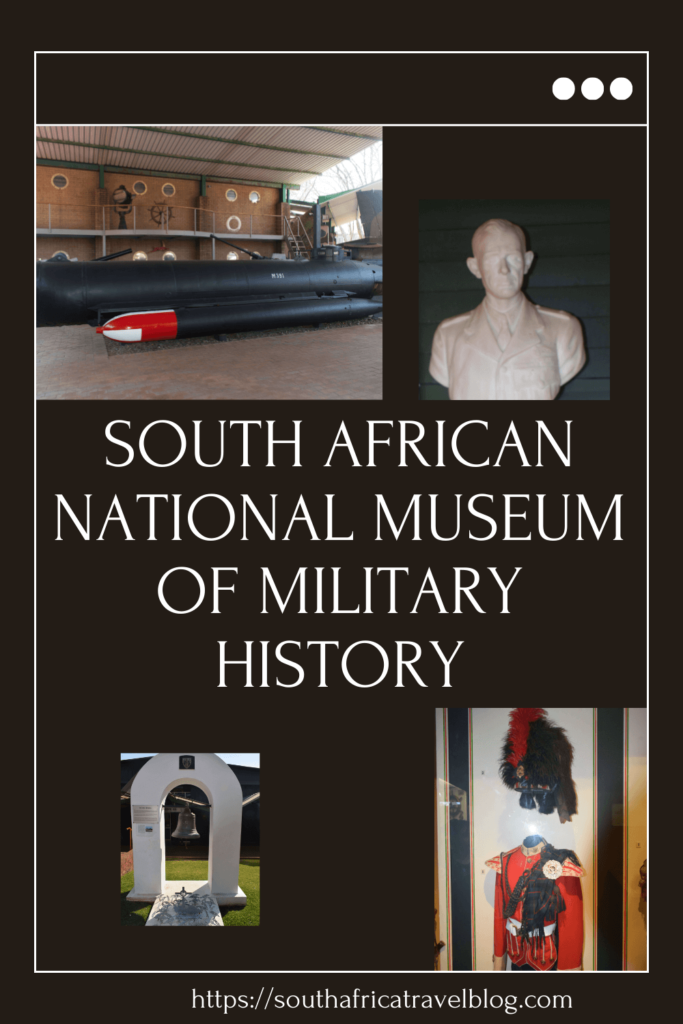
If you’re interested in South African history or a military enthusiast, visiting the South African National Museum of Military History is worth your time. Here, you can learn more about South Africa’s complete military history from the First War of Independence, the Anglo-Boer War, the First World War, the Second World War, the Korean War and the South West African (Namibia) and Angolan conflicts. In this article, learn more about the South African National Museum of Military History, its location, and the highlights of things to see and do at this comprehensive Museum.
Table of Contents
Location of The South African National Museum of Military History
The Ditsong National Museum of Military History is the only military and war museum in South Africa. The Museum is at 22 Erlswold Way in Saxonwold, Johannesburg, 2132. It occupies a 200-acre area next to the Johannesburg Zoo. The map below shows the Museum’s location.
The Ditsong National Museum of Military History is the only Ditsong museum in Johannesburg. There are seven other Ditsong museums in Tswane. The Ditsong Museums of SA Institution manages all the Ditsong Museums of South Africa.
Getting to The South African National Museum of Military History
The easiest way to get to the Museum is by car. There is a parking area right by the Museum.
You can also visit the Museum when you do the Hop-On-Hop-Off Sightseeing Bus. The Museum is a stop on the Green Line.
Contact Details of The South African War Museum
You can contact the Museum at 087 086 7035 or info@ditsong.org.za, especially for school bookings.
The Museum’s is open daily from 7:30 – 16:00. It is open on Saturdays and Sundays. The Museum only closes on Christmas Day and Good Friday.
Admission to The South African National Museum of Military History
The fees to enter the Museum are as follows:
- Local adults: R50 per person
- Children: R35 per child
- Pensioner: R25 per pensioner
- Learners: R30 per learner
- International adults: R80 per person
- International children: R40 per child
A guided tour costs R70 per person.
Things to See and Do at The South African National Museum of Military History
This Museum is the only war and military history museum in South Africa. Many consider it the “spiritual and symbolic home of regular and reserve soldiers and veterans in South Africa and throughout the world”. The Museum has a collection of more than 44,000 items with several attention-grabbing displays. The Museum features displays in 37 categories, including ordinance, small arms, armoured fighting vehicles, edged weapons, medals, and uniforms. There are barrack and camping equipment displays, religious items, communications, rations, medicine, military insignia, propaganda and vexillology. The Museum has several areas, including:
- The GE Brink Hall
- Dan Pienaar Gun Park
- The Main Courtyard
- The GP Capt. “Sailor” Malan Hall
- The FB Adler Hall
- The Lt Gen AML Masondo Library building
- The Capt W F Faulds VC MC Centre
See the Beautiful Anglo-Boer War Memorial
Outside the Museum, before you enter the building, is a large and beautiful war memorial designed by Sir Edwin Lutyens. Prince Arthur, Duke of Connaught and Strathearn, laid the commemorative stone of the memorial on 30 November 1910.

Initially, the memorial’s name was the Rand Regiments Memorial. They dedicated the memorial to the British soldiers who died during the Second Boer War. On 10 October 1999, they rededicated the memorial to everyone who died during the Second Boer War. The memorial’s name changed to the Boer War Memorial.
View the Aviation Collection with The Unique “Mona Lisa” Exhibit
The aviation collection at the Museum has several of the rarest aircraft in the world. Here, you can view iconic warplanes, such as a Messerschmitt Me 262 fighter jet, a de Havilland DH.98 Mosquito combat plane mainly made of wood and a Blackburn Buccaneer S MK 50 carrier-borne strike aeroplane. Another special aircraft is the Focke-Wulf FW 190 in the Sailor Malan Hall.
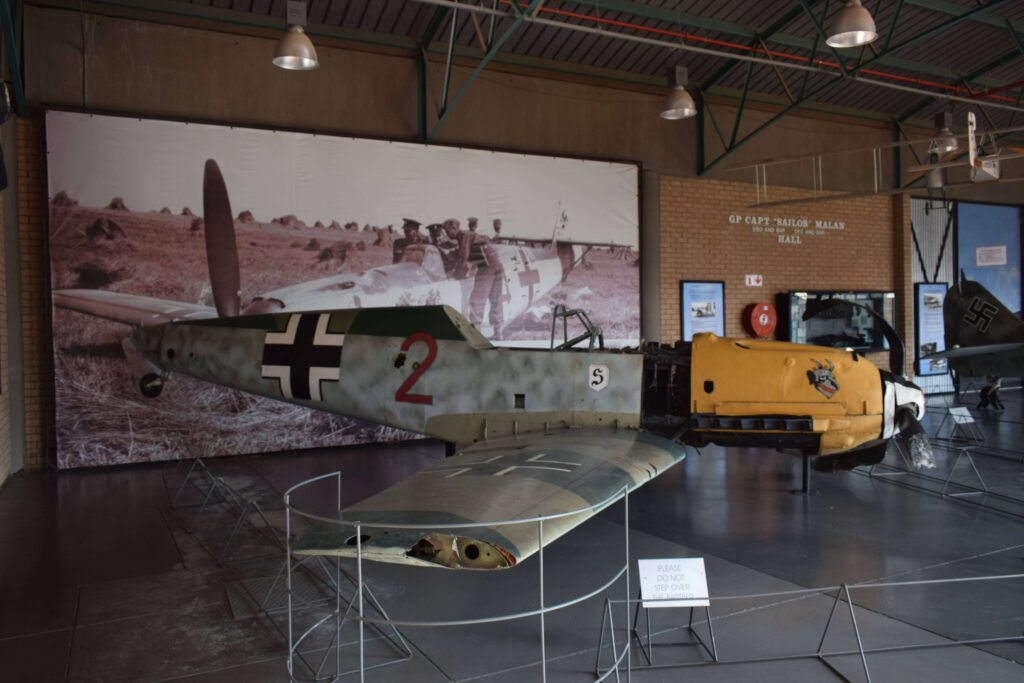
The “Mona Lisa” of planes at the Ditsong National Museum of Military History is the first jet engine fighter plane the Germans designed and manufactured at the end of the Second World War as the first two-seater night fighter jet. Its name is the ME 262, and the one at the South African Museum of Military History is the only night fighter version of this aircraft in the world!
Had the Germans designed and manufactured the plane earlier in the war, the war may have had a different outcome!
View Military Vehicles, Tanks and Weapons from Various Wars
The Museum has many fighter planes from World War 1 and 2. Many of these are the only remaining planes in the world. Many tanks are on display at the Museum, including those used by the South African Defence Force during the war in Angola. Other items displayed include medals, uniforms, armaments and military insignia.
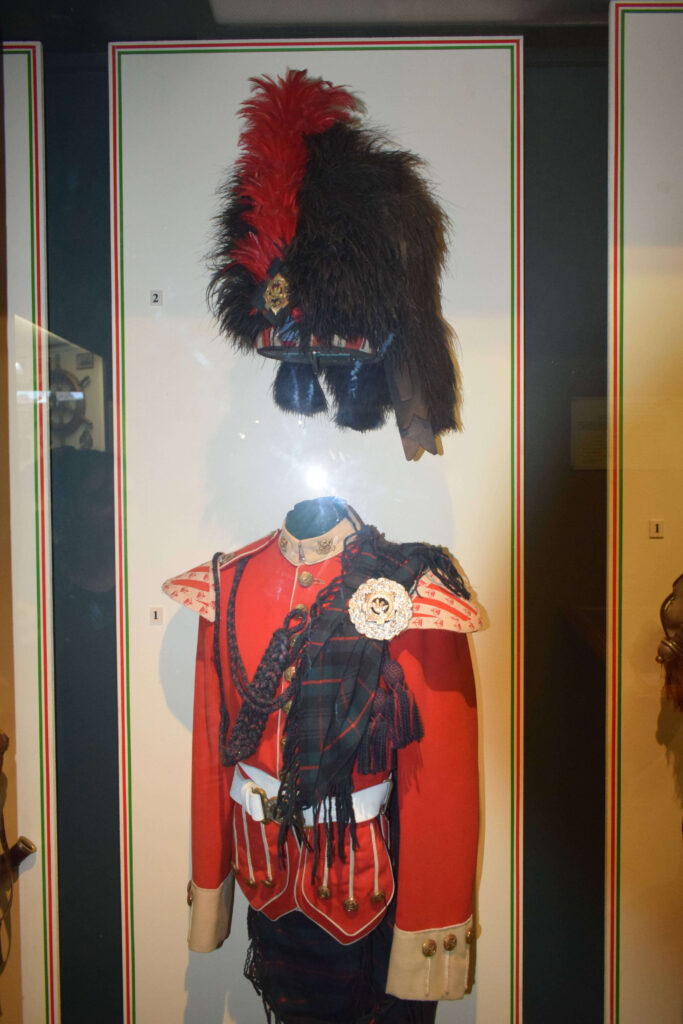
The Carro Leggero 3/35 Italian Light Tank was developed from the British Carden-Lloyd series of ‘tankettes.’ They did not use rivets to bolt the tank. The tank used twin 8mm machine guns, which were helpful against infantry in World War I but not in World War II.
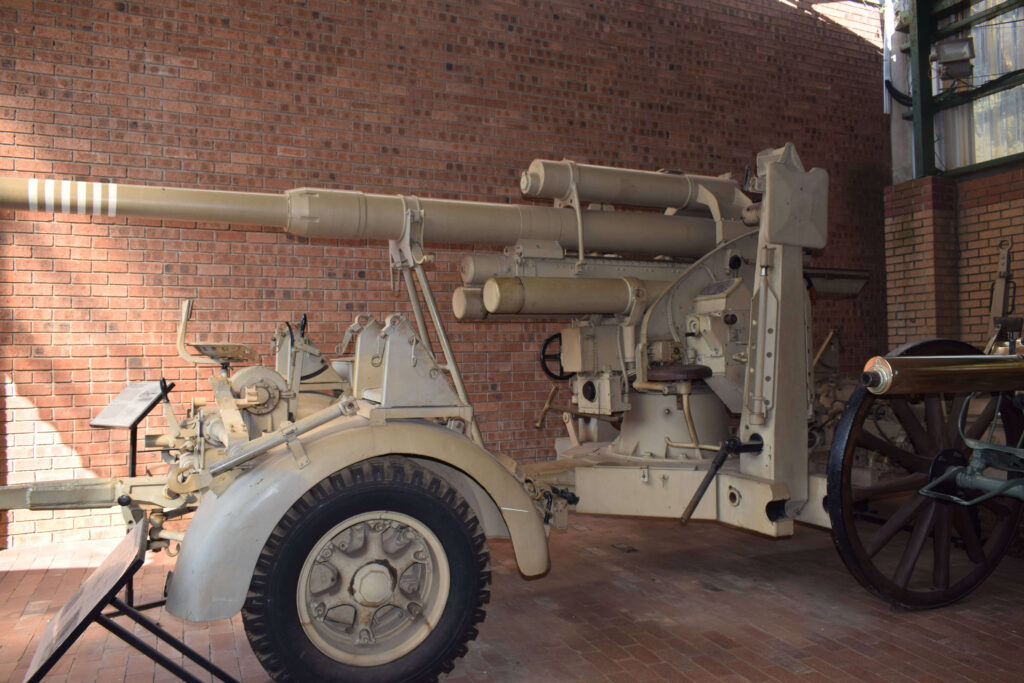
There is an extensive range of weaponry at the Museum, including handguns, machine guns and magazine-fed rifles in the Dan Pienaar Gun Park.
The Museum shows the development of South African small arms from the 1840s. There are about 100 weapons in this display, which includes the R1 and R4 assault rifles the South African armed forces used.
Other historical pieces include matchlocks, 1865-1875 era breechloaders, percussion lock muskets from 1825 to1860, a Westley-Richards falling block carbine, a Swinburn’s Patent 1875 rifle and a Naval Model, a seven-barrel volley gun from 1787, handcrafted by Henry Nick. Only 655 of these guns ever existed.
Visit the Historic Bellman Hangars
There are two of these hangars at the Museum. They have thematic displays, focusing on, for example, the Anglo-Zulu War, South Africa’s role in the First and Second World Wars, the Anglo-Boer War, medicine in war, the development of combat uniforms and equipment, and firearms development.
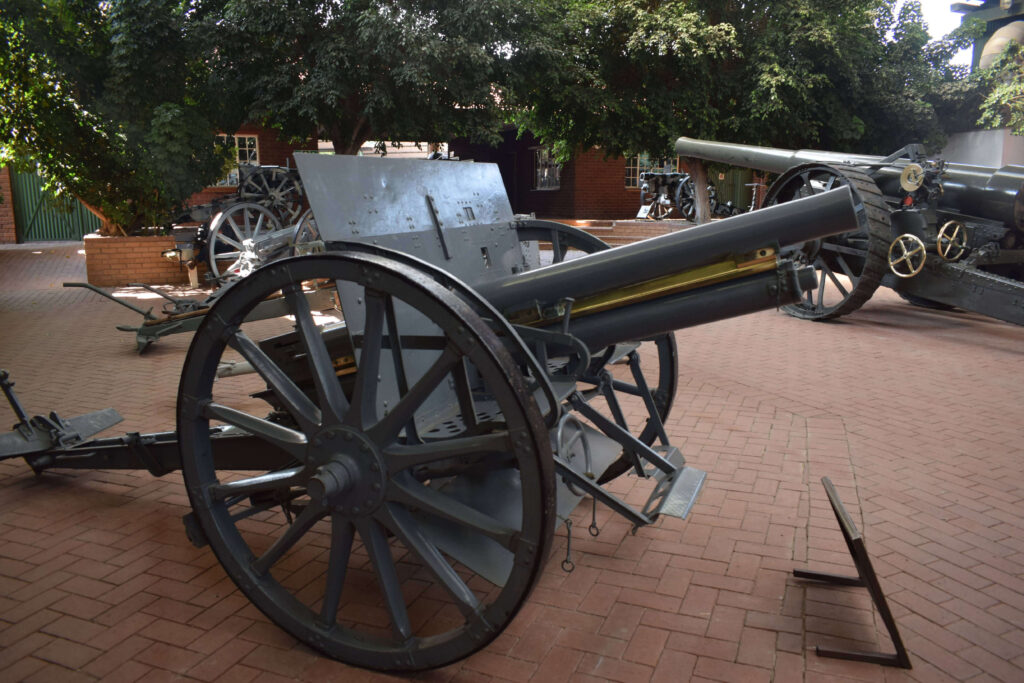
The Museum features a display on the resistance movement, the Umkhonto weSizwe (MK), which was the military wing of the ANC. This exhibit is expanding over time. The Museum acquired a sizeable touring truck parked in the parking area. The truck had been used by Africa Hinterland Safaris and had canvas blinds, which tourists peeked through to view animals on tour from Kenya to Cape Town. The MK used the truck to smuggle hidden weapons into South Africa.
Another resistance movement the Museum covers is the resistance movement to South Africa’s involvement in the war, which included the Rebellion of 1914, the Ossewa Brandwag, and the End Subscription Campaign.
Find Unique Books at The Museum’s Library
The library at the Museum houses a unique collection of books, archival material and journals from various wars. It has the official South African World War II photographs and art pieces. The museum library sells several of its publications.
Shop at The War Store
The Museum has a War Store where visitors can buy badges, books, helmets, uniforms, and weapons. Opposite the War Store, visitors can find the Vargas Café named after Alberto Vargas. He was a painter who painted voluptuous women on the noses of World War 1 planes.
View the Memorials in The Courtyard
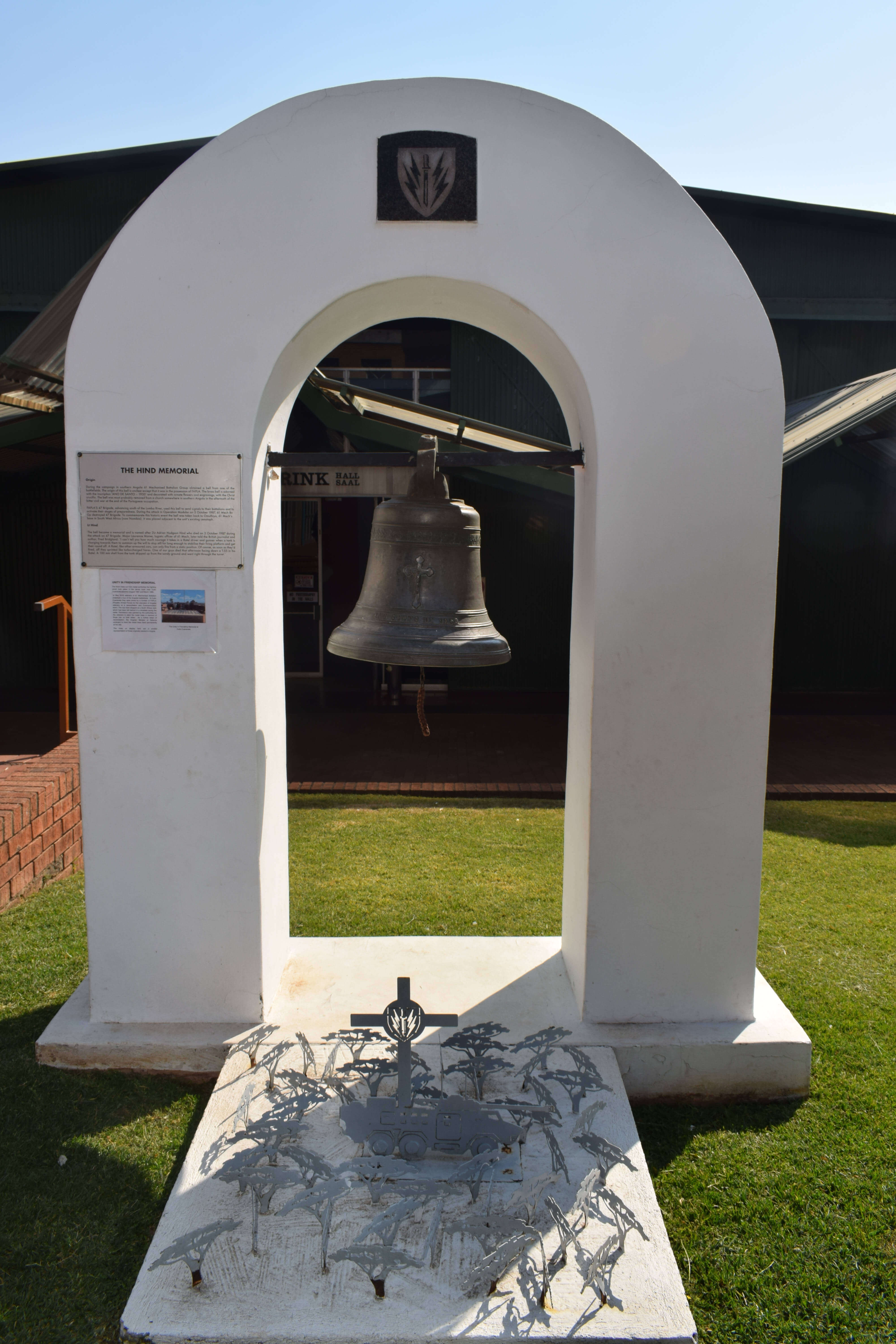
The Museum’s main courtyard has several memorials, including the Hind Memorial, named after Second Lieutenant Adrian Hodgson Hind, who died on 3 October 1987 during Operation Moduler when 61 Mechanised Battalion Group destroyed FAPLA’s 47 brigades. Another memorial in the courtyard includes a memorial honouring the Airborne Forces of the South African Special Forces.
Stroll Around the Outdoor Exhibits
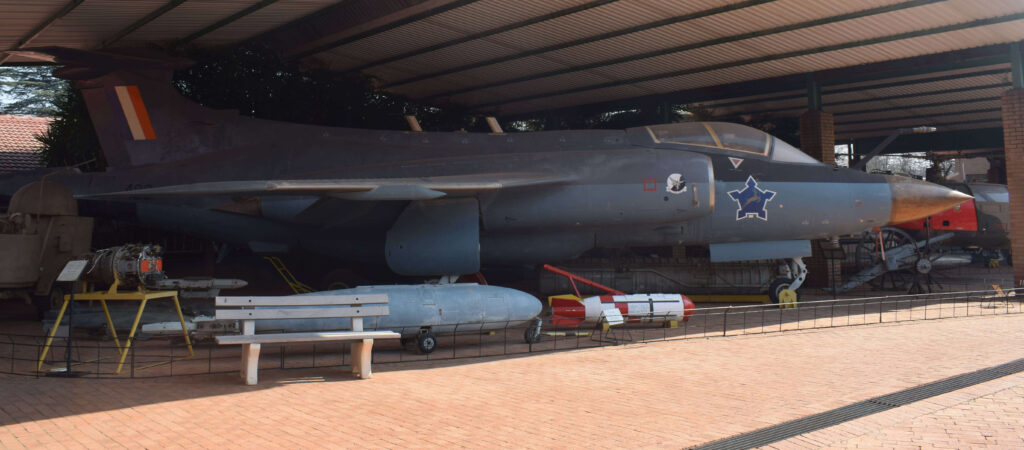
The Museum’s gardens feature several outdoor exhibits, which include:
- A Molch one-person submarine that looks like a giant torpedo. It was electric and designed for coastal operations with a small range of 40 miles at 5 knots. These boats travelled underwater and carried two torpedoes. A G Weser in Bremen built 393 of these submarines. The first was completed and delivered on 12 June 194. The Germans used the Molch against the Allied invasion of the French Riviera coast.
- A QF 4-inch Mk XVI naval gun turret from a South African Navy Loch-class frigate
- Planes, including the Blackburn Buccaneer S Mk 50, the Impala MkII, the Douglas C-47 ‘Dakota’ and the Dassault Mirage III
- Various South African or British armoured vehicles, including the Comet tank, the Churchill tank, the Centurion tank and the Crusader tank
- Captured vehicles from Angola, Soviet Union and Cuba, including the T-34/85 tank, the PT-76 amphibious tank and the T-54/55 tank
- Captured vehicles from Italy and Germany, including the Sd.Kfz. 251 half-track and the Carro Veloce CV-35 tank
- Heavy artillery, such as the G5 and G6 howitzers
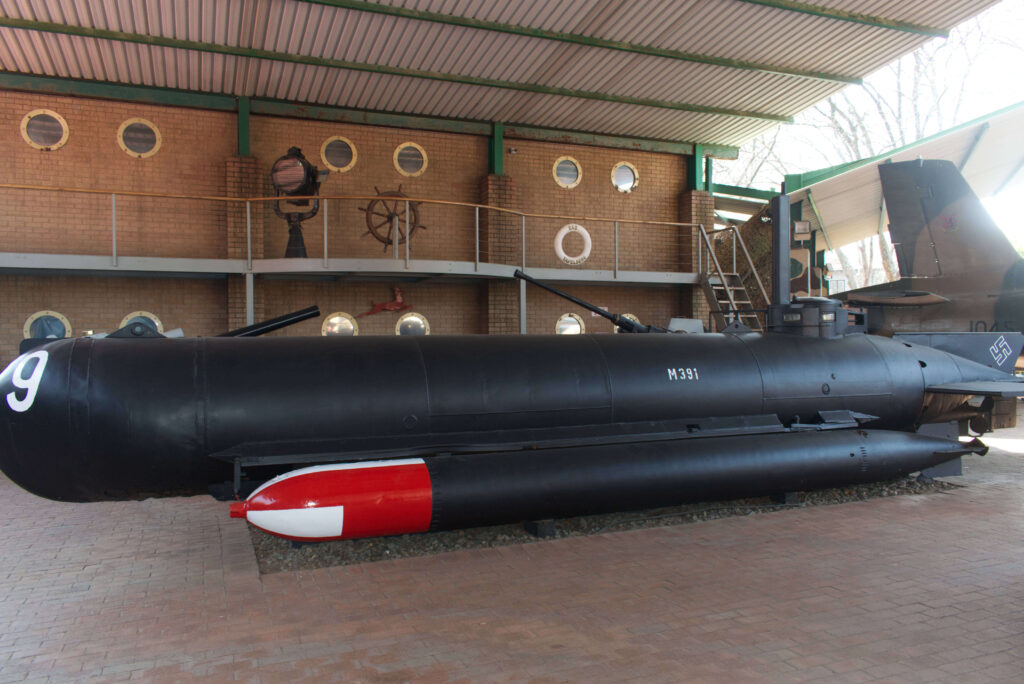
Host an event at The Museum
The Museum hosts conferences and functions. Many military organisations, such as the South African Military History Society, the South African Arms and Armour Society, the South African Arms and Ammunition Collectors Association, the Gold Reef Scale Modellers and the Warsaw Flights Commemoration Committee, use the Museum as a base and have become the Museum’s stakeholders.
History of the South African National Museum of Military History
There was no formal showcase of South Africa’s involvement in the First World War that lasted from 1914 to 1918). In 1940, Capt. J. Agar-Hamilton became the official historian of the Union Defence Forces. He established a Historical Research Committee to focus on preserving documents and military memorabilia. This laid the foundation for establishing a museum focused on military conflicts.
A former Prime Minister of South Africa, Prime Minister Jan Smuts, opened the South African National War Museum in 1947. In his speech at the opening ceremony, he mentioned that the Museum’s purpose was to memorialise South Africa’s efforts in World War 2. It must remind us of the past and the sacrifices and heroism of South African soldiers in the war, but it must also warn about the future and the possibility of war.
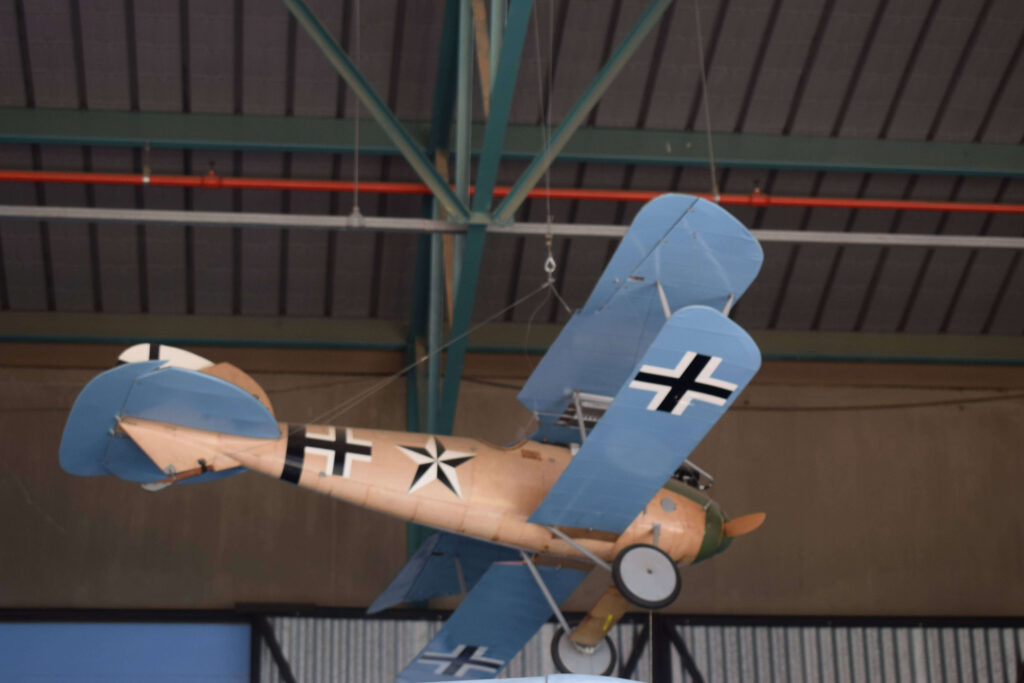
The Museum’s name changed In 1975 to the South African National Museum of Military History. The name change resulted in a change of the Museum’s scope to include the history of military conflicts in which South Africans had a role.
A restructuring of the national museums in South Africa took place in 1999. The South African National Museum of Military History merged with the Pretoria-based Transvaal Museum of Natural History and the National Cultural History Museum to become a northern flagship institution. In 2009, the Museum was again renamed DITSONG: National Museum of Military History.
How Long to Spend at The South African National Museum of Military History
You can spend a full day at the War Museum if you have a deep interest in military history and want to read through the information at each exhibit. However, half a day or between two and four hours would suffice for most people. We spent about 3 hours at the Museum, seeing all the exhibits and reading about those that interested us. On a hot South African day, the Museum is perfect for a visit as it is cool inside the different rooms.
Visitors highlighted the following from their time at the Museum:
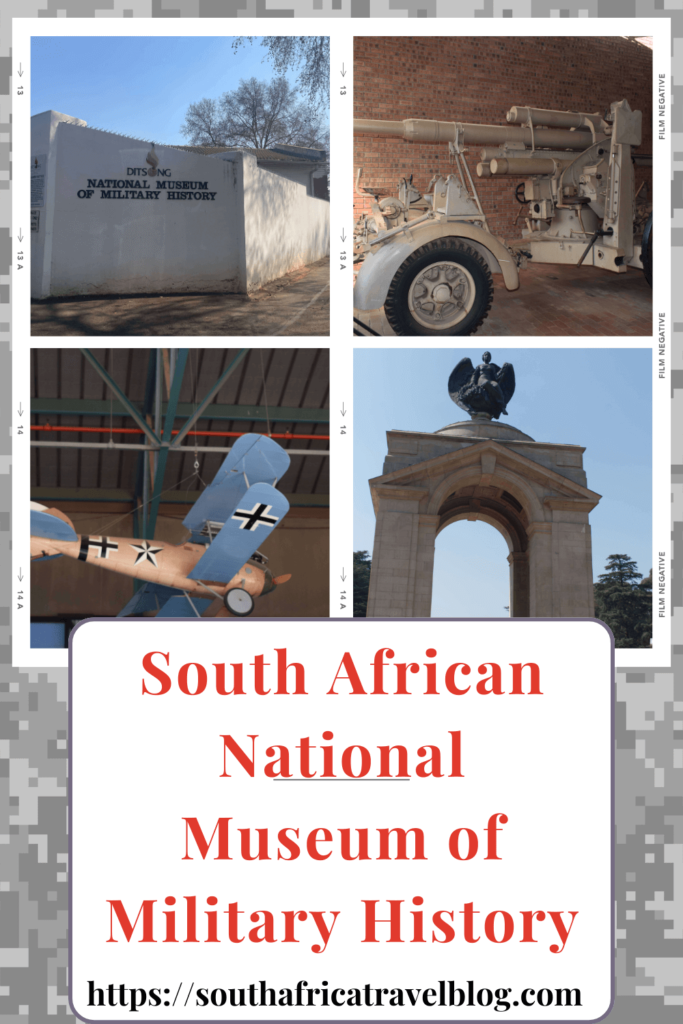
- The extensive collection of Jan Smuts’s items
- The variety of Polish artefacts
- The large number of captured Soviet equipment, such as the T-54 and the largest tank of World War II, the T-34
- The detailed information about the items on display
Attractions Near the South African National Museum of Military History
The Museum is next to Zoo Lake, with a basketball court and paths for walking.
It is next to the Johannesburg Zoo. You can easily visit the Museum and Zoo in one day.
Another attraction that is not too far from the Museum is the Sci Bono Discovery Centre.
Where to Stay Near the South African National Museum of Military History
Sources:
